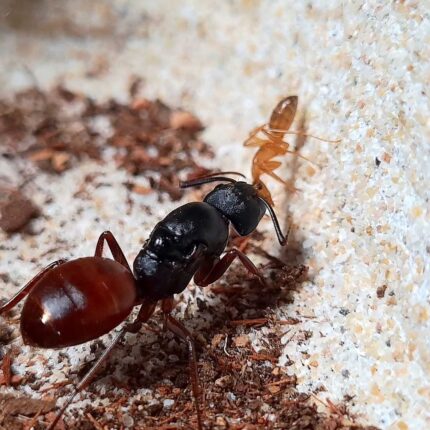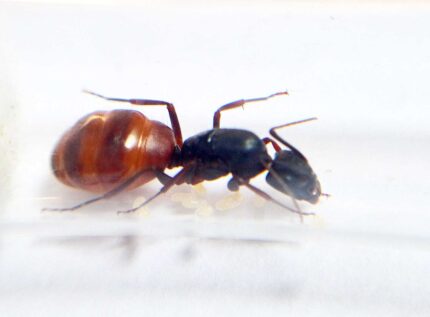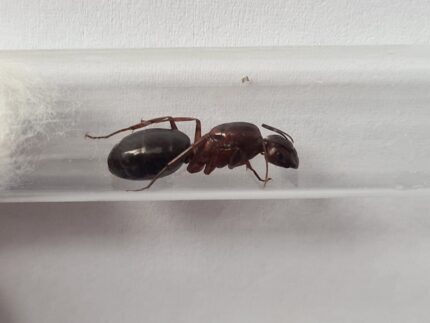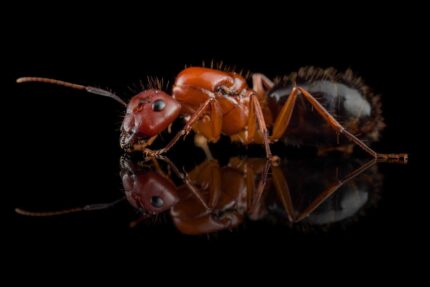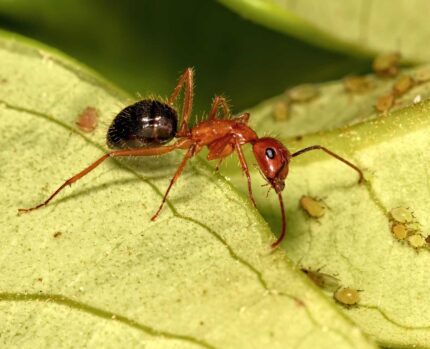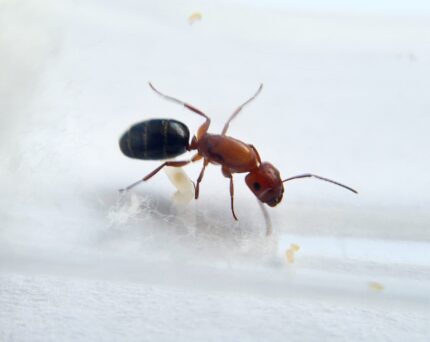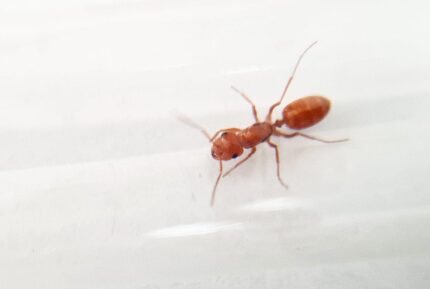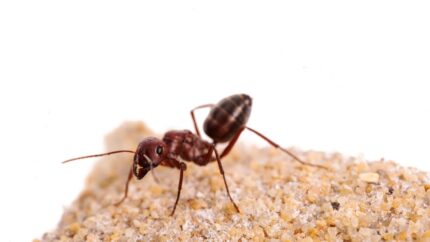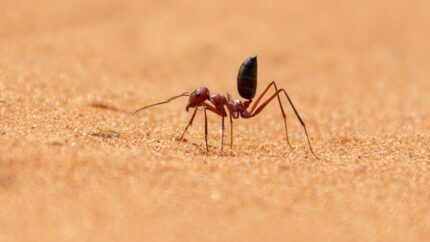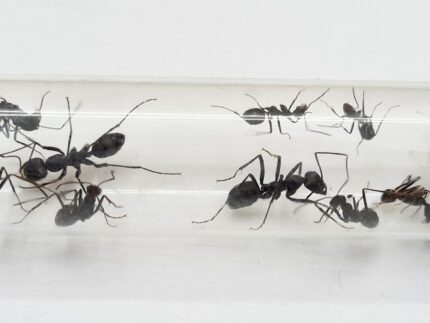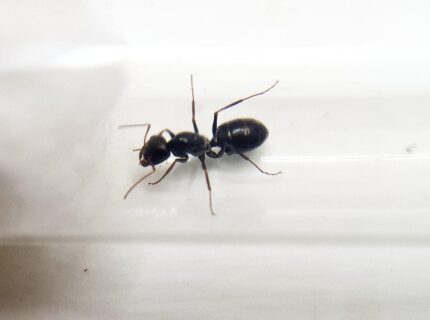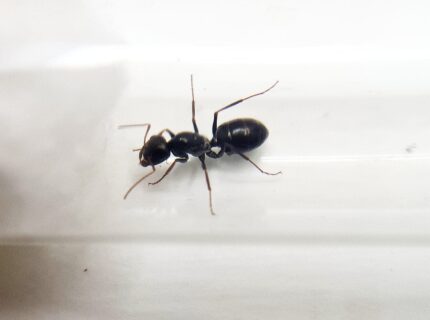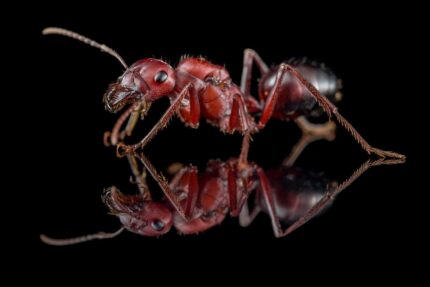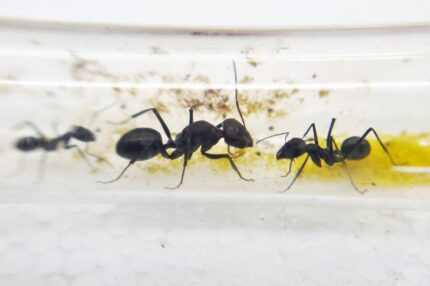Camponotus Ca02
499,90 zł – 679,90 złCamponotus CA02 is a monogynous ant colony with a medium development speed. The colony can have up to 5000 workers. The queen measures 19-23 mm, workers measure 7-14 mm, and majors measure 14-22 mm. They have a black head and chest with an orange-yellow belly. Their nutrition includes insect food, syrup, fruits, vegetables, and jelly.
Camponotus turkestanicus
89,90 zł – 199,90 złThe Camponotus turkestanicus is a monogynous ant species with colony sizes of up to 2000 workers. They have a medium development rate and their queen measures 12-14 mm, while workers measure 7-12 mm. They are brown in color and their diet consists of food insects, syrup, fruits, vegetables, jelly, and cooked chicken without salt.
Camponotus Ca02
Camponotus CA02 ist eine monogynische Ameisenkolonie mit mittlerer Entwicklungsgeschwindigkeit. Die Kolonie kann bis zu 5000 Arbeiter haben. Die Königin misst 19-23 mm, Arbeiter 7-14 mm und Majors 14-22 mm. Sie haben einen schwarzen Kopf und Brust mit einem orange-gelben Bauch. Ihre Ernährung umfasst Insektenfutter, Sirup, Früchte, Gemüse und Gelee.
Camponotus Sayi
Camponotus sayi ist eine Ameisenart mit monogynem Kolonietyp und langsamer Entwicklungsgeschwindigkeit. Die Kolonie kann bis zu 5.000 Arbeiter haben. Die Königin ist 12-13 mm groß, Arbeiter sind 4-7 mm und Majors 9-12 mm. Sie haben einen orange-roten Kopf und Brust sowie einen glänzenden schwarzen Bauch. Ihre Ernährung umfasst Nahrungsinsekten, Sirup, Früchte und Gemüse.
Camponotus sayi
249,90 zł – 419,90 złCamponotus sayi is a species of ant with a monogynous colony type and a slow development speed. The colony can have up to 5,000 workers. The queen is 12-13 mm in size, workers are 4-7 mm, and majors are 9-12 mm. They have an orange-red head and chest, and a shiny black belly. Their nutrition includes food insects, syrup, fruit, and vegetables.
Camponotus Turkestanicus
Veromessor andrei ist eine monogynische Ameisenart mit einer Koloniegröße von bis zu 5000 Arbeitern. Sie haben eine mittlere Entwicklungsrate und reichen in der Größe von 9-11 mm für die Königin und 3,5-8 mm für die Arbeiter. Sie sind schwarz oder schwarz-braun gefärbt und ihre Ernährung besteht aus Nahrungsinsekten, Sirup und Früchten. Die empfohlenen Feuchtigkeitswerte für ihre Arena und Nester betragen 30-50% bzw. 50%.


